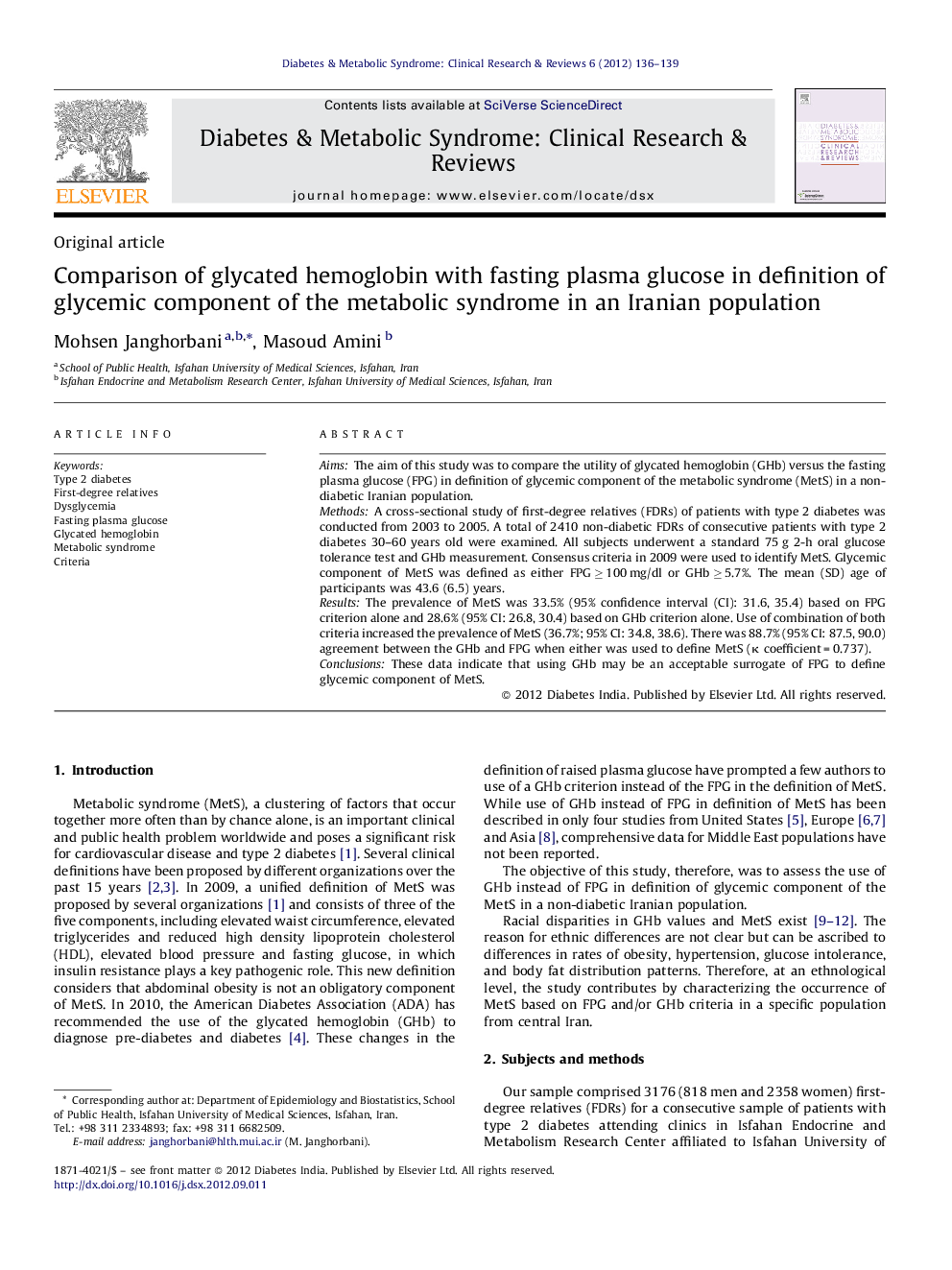| Article ID | Journal | Published Year | Pages | File Type |
|---|---|---|---|---|
| 2910016 | Diabetes & Metabolic Syndrome: Clinical Research & Reviews | 2012 | 4 Pages |
AimsThe aim of this study was to compare the utility of glycated hemoglobin (GHb) versus the fasting plasma glucose (FPG) in definition of glycemic component of the metabolic syndrome (MetS) in a non-diabetic Iranian population.MethodsA cross-sectional study of first-degree relatives (FDRs) of patients with type 2 diabetes was conducted from 2003 to 2005. A total of 2410 non-diabetic FDRs of consecutive patients with type 2 diabetes 30–60 years old were examined. All subjects underwent a standard 75 g 2-h oral glucose tolerance test and GHb measurement. Consensus criteria in 2009 were used to identify MetS. Glycemic component of MetS was defined as either FPG ≥ 100 mg/dl or GHb ≥ 5.7%. The mean (SD) age of participants was 43.6 (6.5) years.ResultsThe prevalence of MetS was 33.5% (95% confidence interval (CI): 31.6, 35.4) based on FPG criterion alone and 28.6% (95% CI: 26.8, 30.4) based on GHb criterion alone. Use of combination of both criteria increased the prevalence of MetS (36.7%; 95% CI: 34.8, 38.6). There was 88.7% (95% CI: 87.5, 90.0) agreement between the GHb and FPG when either was used to define MetS (κ coefficient = 0.737).ConclusionsThese data indicate that using GHb may be an acceptable surrogate of FPG to define glycemic component of MetS.
